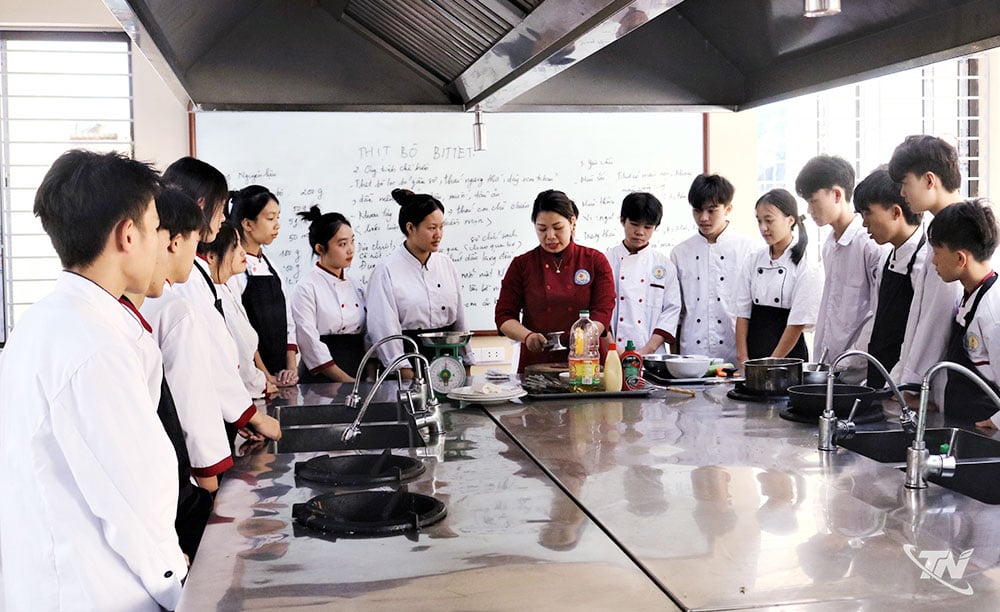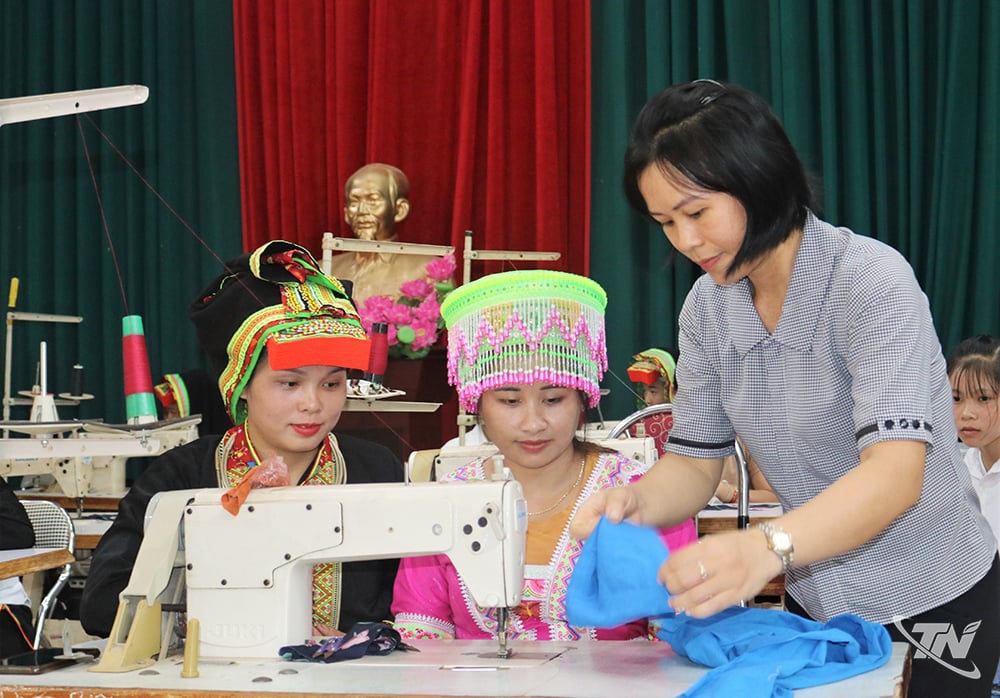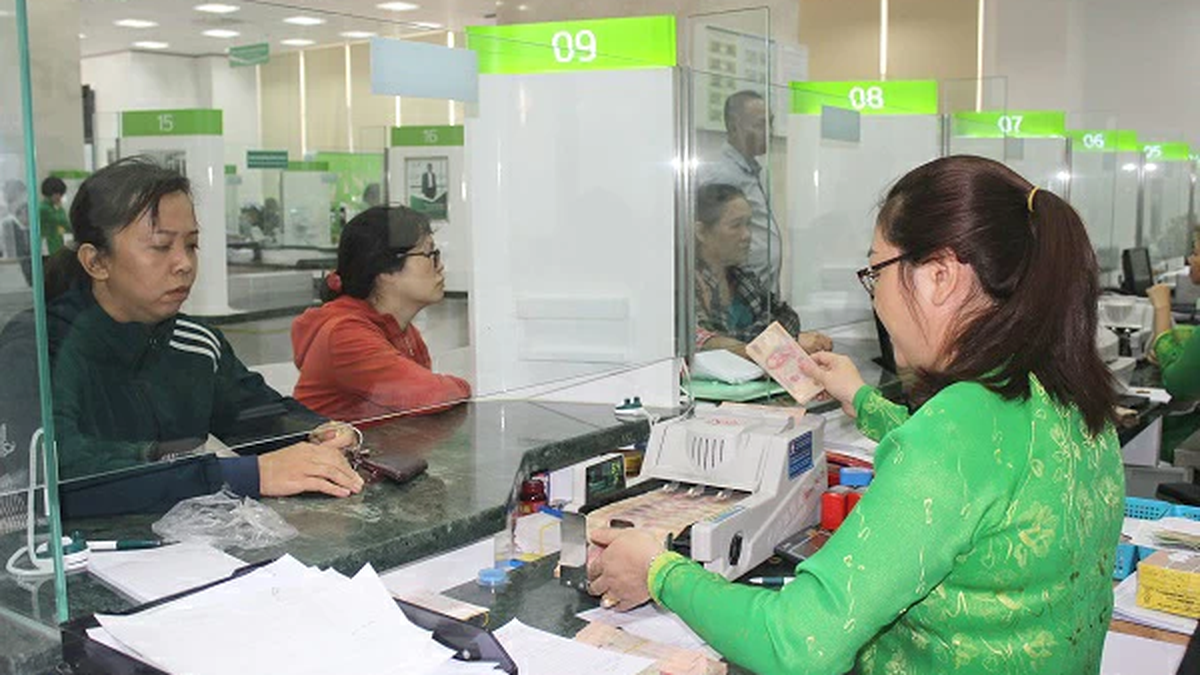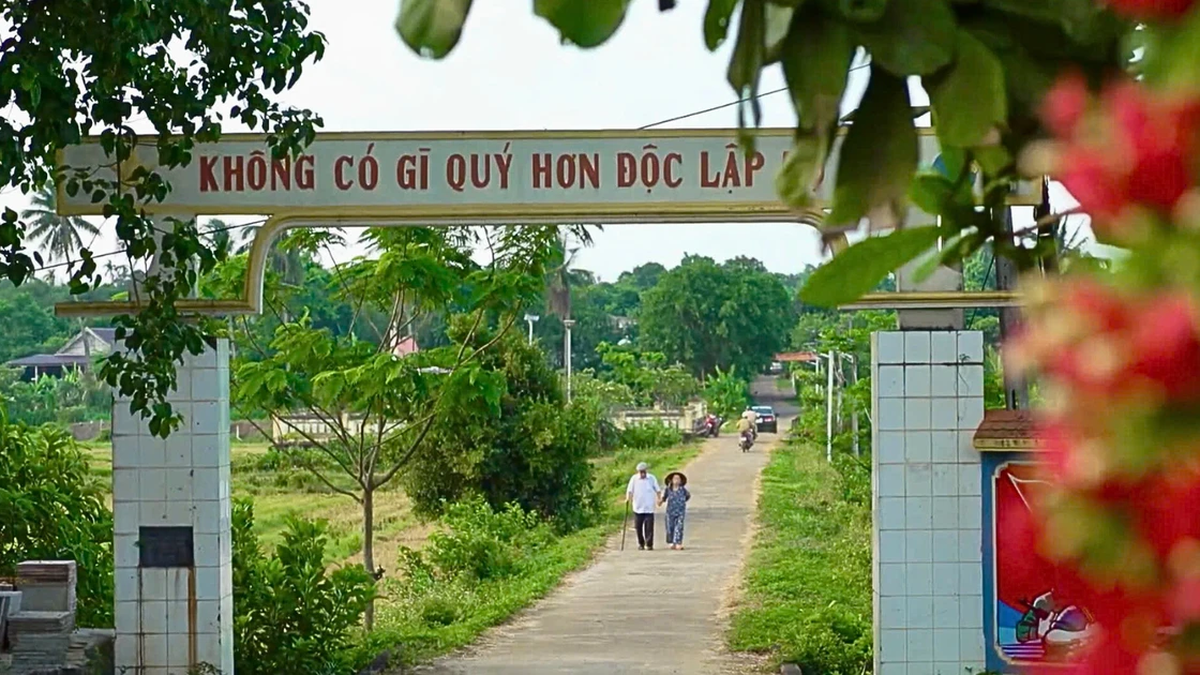 |
| Practical class of students of College of Commerce and Tourism . |
To achieve the above goal, Thai Nguyen province focuses on investing in improving the capacity of the vocational education system, linking training with labor market needs, focusing on training high-quality human resources to serve high-tech industries, modern services and the digital economy .
Along with that, cooperation programs with businesses and links with domestic and foreign educational organizations are promoted, creating a dynamic, flexible and effective vocational training ecosystem.
Currently, 92 communes and wards of the province have more than 778,000 people of working age, of which more than 768,000 people have jobs; nearly 10,000 people are ready to participate in the labor market.
In 2024, the whole province created jobs for over 30,800 people, of which the old Bac Kan province reached 8,500 people, the old Thai Nguyen province reached more than 22,300 people. In particular, more than 4,000 people were given new jobs through the program of sending workers to work abroad for a limited period under contract.
Vocational training and improving the quality of human resources are also identified by the province as an important breakthrough solution in economic development and social stability. The province has 56 vocational training establishments, with a training scale of more than 120,000 students each year.
In order to meet the needs of learners and the labor market, the facilities have actively innovated the program, improved the quality of the teaching staff, invested in facilities, and expanded links with domestic and foreign enterprises. At the same time, the units focus on updating technology, integrating digital skills, soft skills and foreign languages into training, helping students adapt quickly to the modern working environment.
 |
| By learning a trade, ethnic minorities have new jobs (photo taken in Nghinh Tuong commune). |
In organizing and implementing vocational education, the province focuses on directing and drastically implementing vocational training and human resource training to serve the task of socio-economic development.
To achieve the highest efficiency, the provincial authorities regularly issue documents guiding vocational training institutions to streamline, standardize and develop facilities and equipment according to occupations; focus on developing "key occupations", diversify training occupations to meet the needs of both learners and employers.
Instead of having equal theoretical and practical hours as before, vocational training institutions have reduced theoretical hours to 30% and increased practical hours to 70%.
According to statistics, more than 94% of students after graduation meet the labor needs of businesses. Many students are recruited by businesses immediately after graduation.
Promoting proactiveness, creativity and enhancing competitiveness, the province encourages training institutions to closely cooperate with businesses, expand international cooperation, and develop high-quality, flexible, multi-disciplinary and multi-professional training programs.
In 2024 alone, nearly 53,500 positions will be recruited. In 2025, it is expected to recruit 56,000 positions. Currently, most of the province's vocational training institutions are implementing the "AI for All" program, helping students access modern technology early, forming digital thinking and the ability to adapt to the new labor market.
The majors of Industrial Electronics, Automotive Technology, Mechanical Engineering, Fashion Technology, Restaurant Management, Food Processing Technology, Computers, Information Technology, Engineering Technology; Health and Services, and Tourism attract a large number of students.
In addition, traditional occupations serving the new rural development program are also maintained and prioritized for enrollment, focusing on elementary level training and short-term courses under 3 months to meet local labor needs.
To further enhance competitiveness and meet the demand for human resources in the 4.0 era, Thai Nguyen province continues to streamline the network of vocational training institutions, provide multi-disciplinary and multi-occupational training, and invest in key industries according to national and international standards. At the same time, it promotes the application of digital technology, innovates programs in line with business needs and integration, and improves the quality of human resources to meet the domestic and foreign labor markets.
Source: https://baothainguyen.vn/xa-hoi/202507/don-bay-cho-phat-trien-ben-vung-f0300c6/



































































































Comment (0)